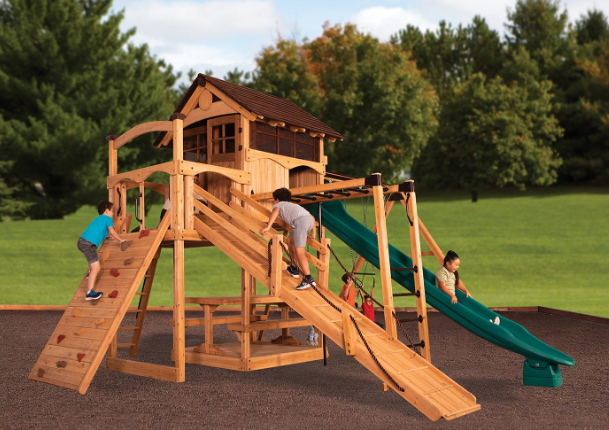Safety FeaturesSafety is the top priority. Equip the course with high-quality safety gear, including harnesses, helmets, and secure belay systems. Incorporate safety nets and padding in areas where falls are likely. Follow industry standards and guidelines such as those set by the Association for Challenge Course Technology (ACCT) to ensure all equipment and structures meet rigorous safety criteria. Regular inspections and maintenance are essential to keep the course in top condition and prevent accidents.
Variety of ObstaclesA successful indoor ropes course offers a range of obstacles that cater to different skill levels and abilities. Include elements such as balance beams, swinging ropes, zip lines, and cargo nets. Design obstacles that challenge both beginners and experienced participants, ensuring everyone finds the course engaging and rewarding. For instance, balance beams can be set at varying heights to provide different difficulty levels.
User Flow and CapacityPlan the course to accommodate a smooth flow of participants, preventing bottlenecks and long wait times. Design entry and exit points that are easily accessible and ensure that the course can handle the expected capacity. For a medium-sized facility, a course designed for 20-30 participants at a time can help maintain a steady flow without overcrowding. Consider incorporating rest areas where participants can pause and recover before tackling the next challenge.

Theming and AestheticsThe visual appeal of an indoor ropes course enhances the overall experience. Choose a theme that resonates with your target audience, whether it's an adventurous jungle, a futuristic space station, or a medieval castle. Use vibrant colors, engaging designs, and immersive decorations to create an exciting atmosphere. Theming not only makes the course more attractive but also adds an element of storytelling, enriching the participant's experience.
Accessibility and InclusivityEnsure the ropes course is accessible to people of all abilities. Include ramps, handrails, and adaptive equipment to accommodate participants with disabilities. Design some obstacles to be lower to the ground or adjustable in difficulty to allow everyone to participate. An inclusive design approach not only broadens your customer base but also promotes a welcoming environment for all.
Technology IntegrationIncorporating technology can elevate the indoor ropes course experience. Use sensors and smart devices to track participants' progress and provide feedback. Interactive elements such as touchpoints that light up or make sounds when activated add an extra layer of engagement. Offering a mobile app that tracks scores and times can enhance the competitive spirit and encourage repeat visits.
Designing an indoor ropes course involves balancing safety, excitement, and accessibility to create an engaging and memorable experience. By considering these factors, you can develop a course that stands out in the market and attracts a diverse range of participants. For more information and inspiration, visit our indoor ropes course page.
